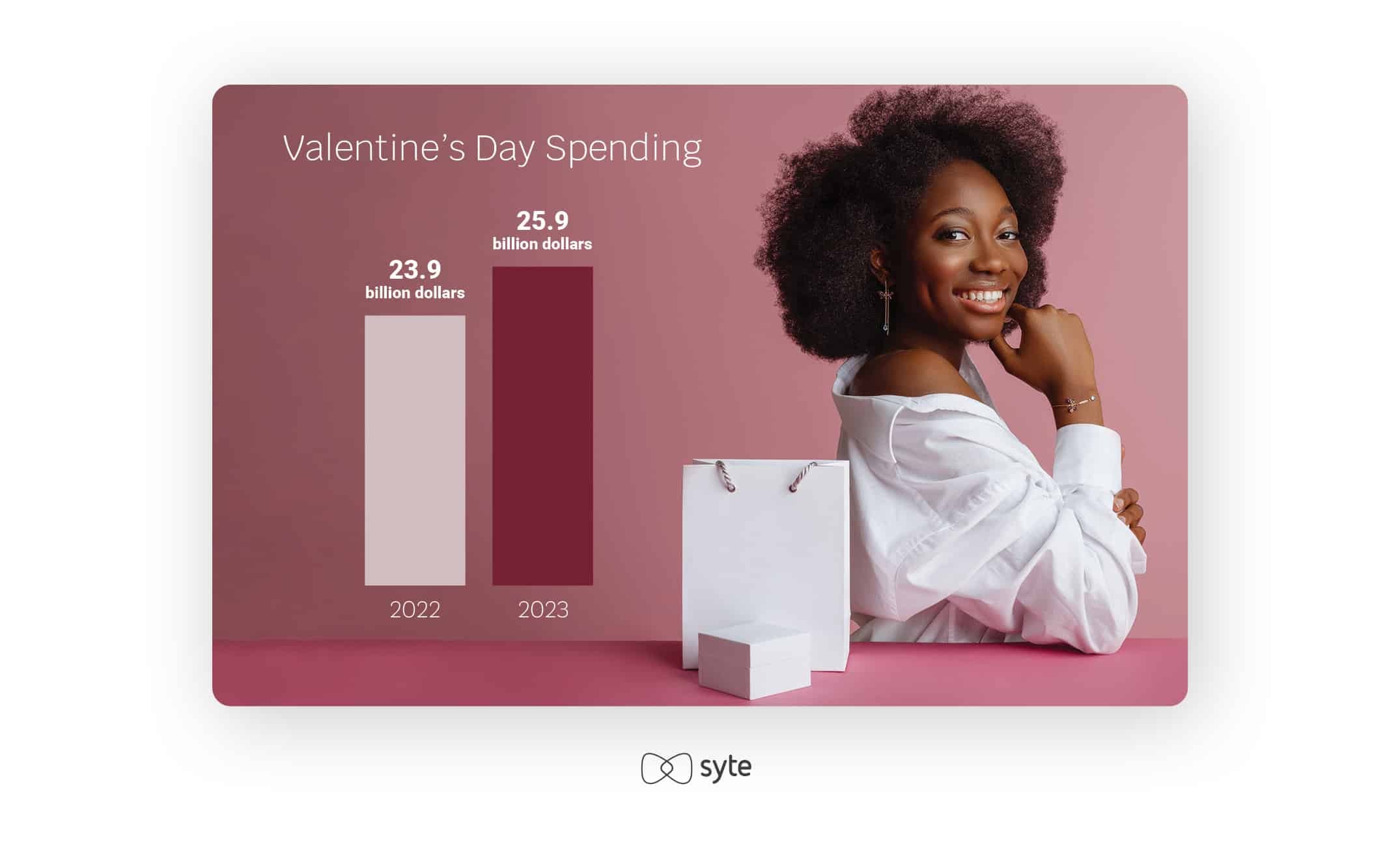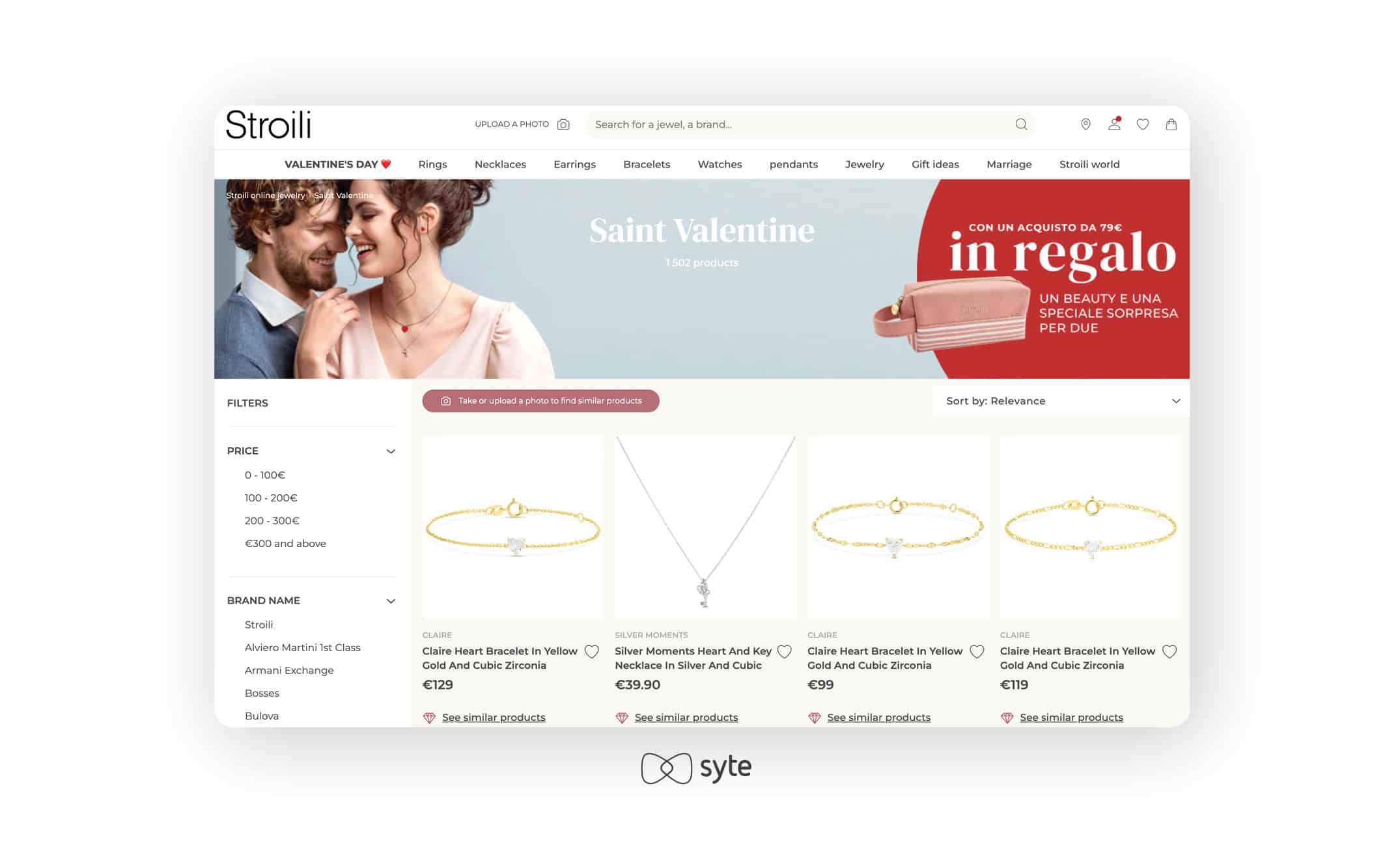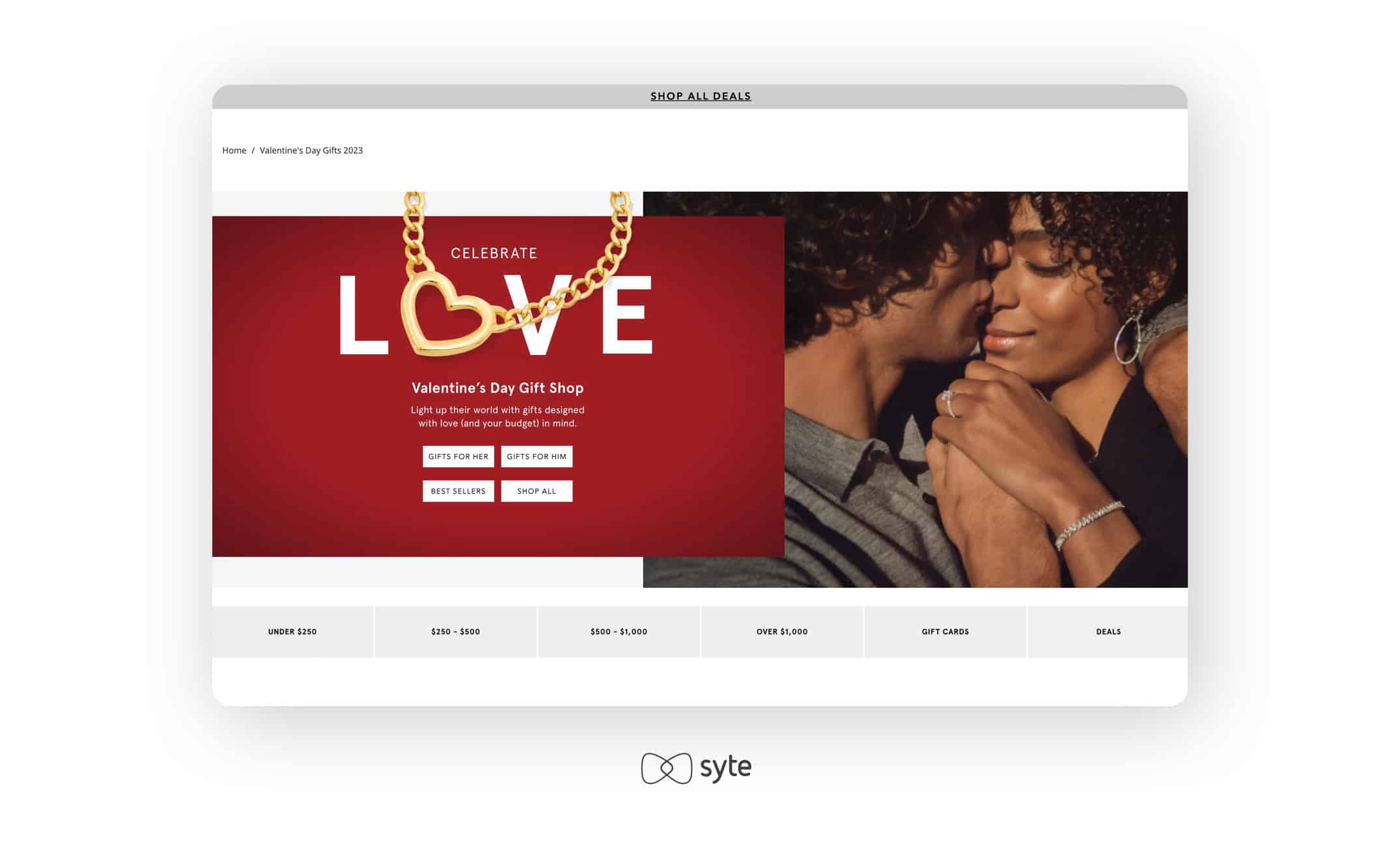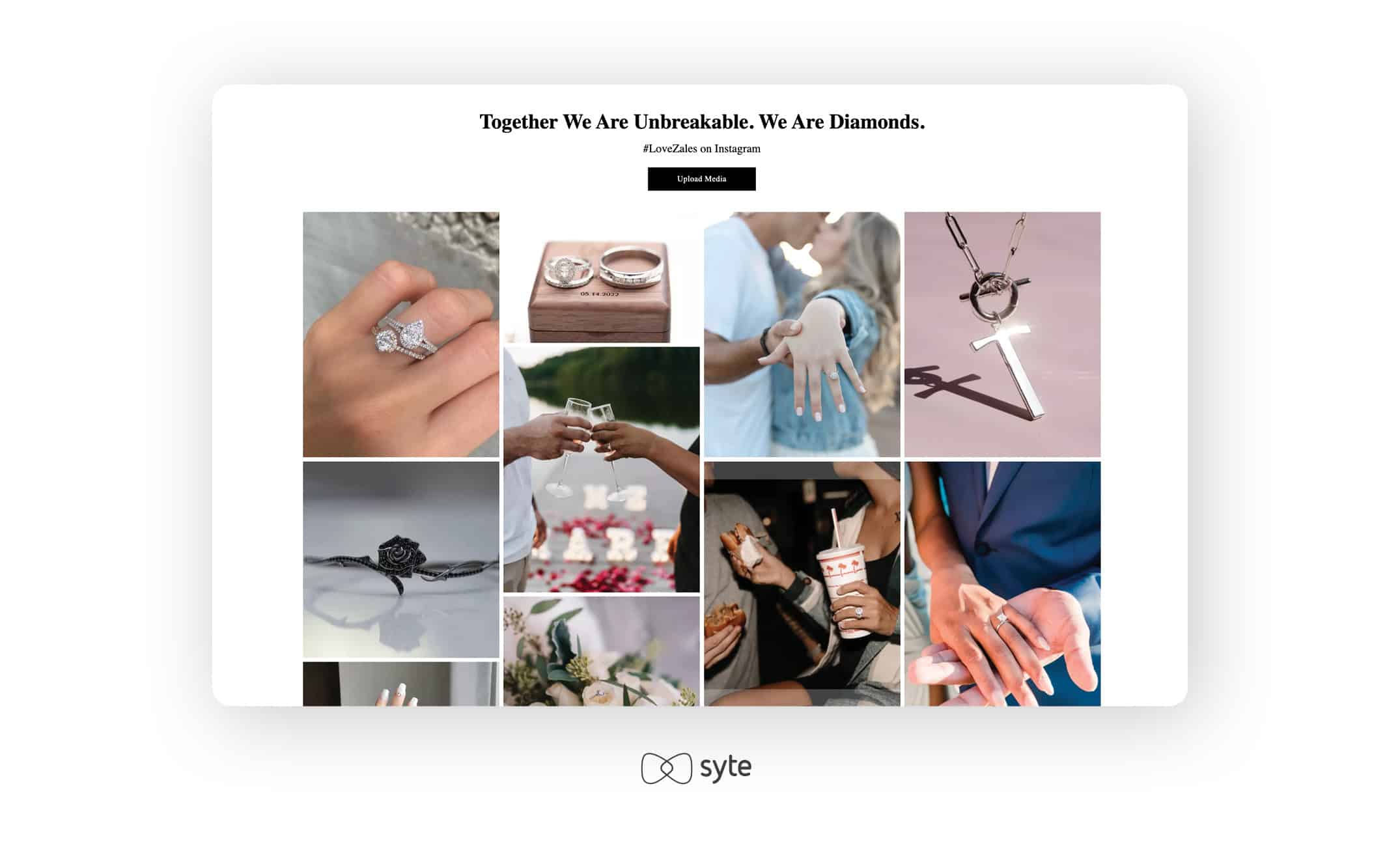It’s Valentine’s Day season, AKA the ideal time for jewelry retailers to showcase their sparkling selections and help customers find the perfect gift for loved ones. Consumers are expected to spend $25.9 billion on Valentine’s Day this year, compared to $23.9B last year, and it looks to be one of the highest spending years on record, according to the National Retail Federation and Prosper Insights & Analytics. But in our constantly evolving digital world, nothing stays the same for long. Here are three ways jewelry shopping is changing in 2023.

#1: Snap it, Shop it: Visual Search is Huge
Mission-driven consumers are looking for thoughtful online shopping experiences to guide them to the right items — and that’s especially true for jewelry shoppers, who are purchasing high-ticket items with intricate details that are sometimes difficult to ascertain on a screen (or a phone).
To combat these limitations, the most successful eCommerce brands turn to visual search for jewelry.
Visual search is especially important for jewelry brands and retailers. Arguably, the most important benefit is enabling effective product discovery — if customers can’t find what they are looking for, they will never complete a purchase. Jewelry has specific descriptors that aren’t commonly known by the layman, such as the type of stone, materials used, style, and carat size. While it’s difficult to describe the look of jewelry using words, images can provide a much easier way to search.
When you set the stage for a stellar customer experience, it can have a powerful ripple effect. With AI-powered visual search in their toolbox, jewelry brands can boost conversion, increase revenue, encourage future purchases, and build long term brand loyalty.
Retailers and brands that use visual search tools like similar item search for jewelry discovery may find the following results:
- Speed up product search to conversion. Visual AI helps retailers and brands link customers to desired products with ease. With recommendation engines like Shop Similar and Shop the Look for jewelry, shoppers are presented with visually similar and complementary items. These technologies are underpinned by visual AI that understands your shoppers’ unique visual tastes.
- Boost customer acquisition and unlock loyalty. Visual search provides access to highly motivated and ready-to-buy traffic that is more likely to buy and revisit when offered a great shopping experience.
- Promote impulse purchases and increase cart size. Shoppers may be motivated to buy products they didn’t plan on if they’re inspired, even if it means going over budget. Gen Z is particularly more likely to make impulsive purchases, with nearly 60% more of them buying items they liked after seeing them randomly.
Leading Italian jewelry retailer Stroili features Syte’s visual search technology prominently on their page of Valentine’s Day offerings, so visitors can easily surface relevant products at the moment that they feel inspired — whether they are scrolling through social media, walking down the street, or browsing the website.

#2: Your Perfect Fit: Customized Product Discovery Journeys
As shoppers explore your site for the best gift, make sure it’s ready with optimized product discovery tools for easy and intuitive shopping. Each and every shopper should find a path laid out to the perfect piece of jewelry that reflects their own unique tastes and preferences.
Flexible filters
Shoppers have varying motivations and requirements when buying jewelry. Some are more driven by style, while others are limited by price. In any case, providing buyers the option to surface the most relevant and appropriate products for their individual intent is of foremost importance for a frictionless jewelry shopping experience.
Building anticipation on the homepage
For many shoppers, product discovery begins on your homepage. As the online version of your storefront, it is the entryway to your catalogue, and must also provide highly relevant starting points for exploring your website. A great way to send shoppers on the right path is by offering collections based on themes (for example, a gift guide for Valentine’s Day) and product characteristics (new items or bestsellers). Kay Jewelers does a great job of this with a reference to lower price points in the copy for budget-conscious customers.

#3: Social Proof Takes the Stage: The Rise of Social Commerce
Social media consumption has become a deeply ingrained habit for many of us. Brands and retailers that wish to remain relevant need to meet shoppers where they already are — on Instagram feeds, Facebook, Pinterest, and TikTok. They must build a bridge — or a scrolling feed — that effortlessly shuttles inspired shoppers from social feeds through the purchasing journey in a seamless and engaging manner.
User-generated content
Highlighting your customer reviews and social proof is a powerful tool that builds trust and confidence, and promotes organic engagement. Zales features a banner with a UGC gallery, curated from Instagram, that encourages customers to “share how you sparkle.”

Capture the Purchasing Power of Millennials & Gen Z
Millennials’ digital savviness and substantial disposable income has a great portion of the retail sector vying for their business. The first cadre of “digital natives” raised the bar for the customer experience, both online and offline. Brands targeting younger generations must focus on visual search and social media channels to appeal to this group.
For many Gen Z’ers, access to sophisticated eCommerce tools is a primary distinguishing factor when deciding where to spend their money. Millennial and Gen-Z are increasingly visual, and may prefer to use visual search tools over conventional keyword and text search.
Syte’s Shop Social technology can promote specific content from influencers or your social media feed, giving mobile browsers an engaging user experience. Shoppers can simply tap items to shop directly from the image. Additionally, Syte technology automatically syncs the social feed to your product catalogue in order to ensure that out-of-stock items are never displayed.
Conclusion
To succeed in eCommerce in 2023, it’s vital for brands to keep pace with the constantly evolving technology and consumer expectations by not just meeting, but exceeding market innovations and audience expectations.